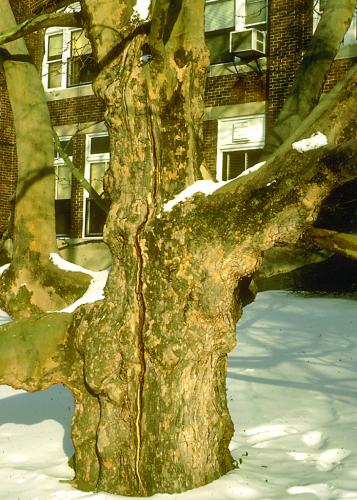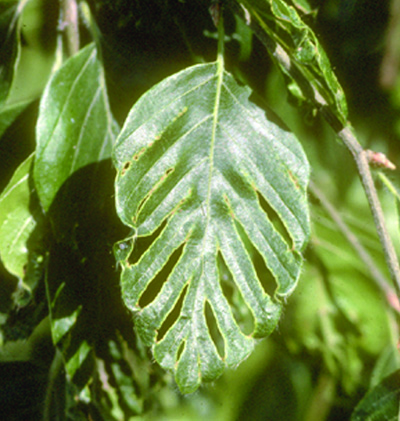Frost and freeze
July 30, 2015

Splits create entry points for fungi. Thin barked trees may also suffer from sunscald on the sides of the tree exposed to strong sunlight due to heating and dehydration of tender bark.
Frost cracks develop on the trunks of smooth barked trees due to differences in temperature. Winter sunlight heats the south and southwest sides of the tree during the day causing the bark to expand; when temperatures cool in the evening the bark contracts and splits.

The reddishbrown dead tips on this spruce were caused by a frost as tender new growth was developing.
Frost injury to leaves may be confused with anthracnose symptoms. Anthracnose is caused by a fungus and will have a narrow and specific host range. Frost injury may be more severe in low areas, and you may find it on multiple species including surrounding perennials, annuals and weeds. Trees with frost damage may have leaves that have been completely killed, while other slightly younger or older leaves appear normal.

Injury on these birch leaves resulted from freezing temperatures as the leaves were developing. Injured tissue died, leaving holes as the undamaged parts of the leaf grew. Sometimes a ragged leaf margin results, as the undamaged leaf tissue expands.
Little can be done about frost damage; plants tend to grow out of the injury with time. Trying to cover plants to protect them can actually result in more severe injury where the covering touches the plant.

Cupping and blackening of the tips and leaf margins that is wide-spread across sections of the tree are signs of frost.
Print a PDF of this page: Abiotic injury - frost and freeze



 Print
Print Email
Email



